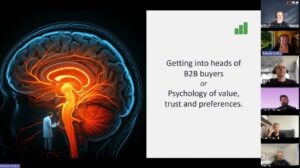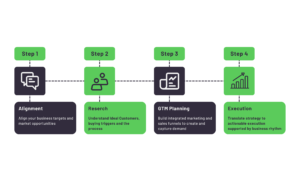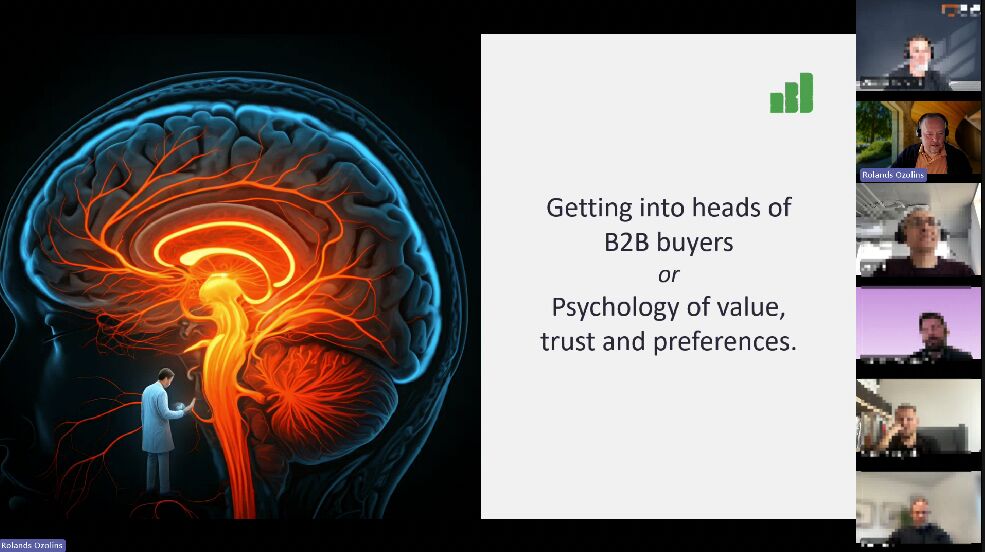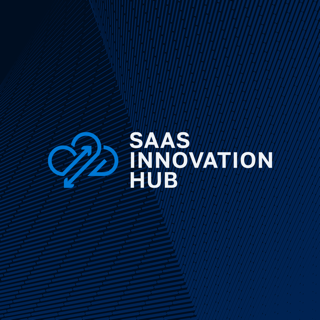This blog was edited and updated on 17.07.2023.
How the idea of Digital Sales Engine started?
Back in 2017 I and other founders of IBD Consulting were acutely aware of the decisive impact of modern digital marketing in B2B.
We had just taken a brand of complex and expensive aerospace technologies from the first prototype to over 1M EUR business in a year. And all this with help of rather basic digital marketing – mainly Google search ads and YouTube videos.
Back then, I couldn’t find any agency or consultant who could help us with critically important but more advanced things.
Things like marketing content (ebooks, whitepapers, product guides, webinars) and marketing automation. Somebody who really understands what does it mean to sell complex technological products. A process that require prospect education and nurturing for many months until they are ready to purchase.
We asked ourselves – what if we create a proven end-to-end concept of digital marketing services for tech companies selling in B2B?
We thought that we could make an offering that included everything average small to medium tech company would need to start generating qualified leads. And we believed we can make it so affordable that it would be cheaper than hiring a single in-house marketing specialist.
So we just did that.
And we called it Digital Sales Engine.
Today we are helping tech companies all across Europe to attract, educate and qualify leads. Fill their sales pipelines with qualified opportunities and keep their sales teams busy. We help them grow their business. Expand domestically or break into international B2B markets.
Digital Sales Engine is based on principles of modern B2B marketing
When looking for a solution, in more than 70% of cases, the business decision-maker of today will start with a generic web search. Moreover, before a customer is ready to contact sales representatives, they will have consumed 3-7 pieces of marketing content independently.
The buying process that includes searching, gathering information, and researching is called the buyer’s journey.
The best a B2B seller can do is to provide marketing content that buyers need and make this buying journey the path of least resistance.
In a way, competition between different vendors takes place on a level of buying journeys. The journey that is easiest to make usually wins.
Digital Sales Engine makes use of various types of marketing content across different marketing channels.
The purpose is to make sure all possible questions that buyers might have on their buying journey are answered. You want to design a buying path of least resistance. Marketing automation takes care of content delivery and rich analytics allow for instant feedback and optimization along the way.
Digital Sales Engine means improved processes
Digital Sales Engine is a set of modern technologies, such as marketing automation, and proven processes that allow the benefits from modern digital marketing technologies to be harvested, the marketing and sales process to be integrated, and the process to be optimized and significantly simplified.
It is an end-to-end process that generates qualified marketing leads and takes products to international markets at a reasonable cost.
It is also a process-focused mindset that simplifies otherwise very complex ideas of digital marketing, customer journey, lead generation, lead nurturing, sales processes, etc.
Think of it as like the assembly line (conveyer) system used in production. The production process is split up into discrete steps, each with certain objectives, tools, costs, specific measurements, etc.
In 1913, Henry Ford introduced conveyor-belt assembly lines at Ford Motor Company. This allowed the company to increase the efficiency of automobile production while reducing costs dramatically. In fact, Ford managed to break the production process of a Ford Model T down to 45 steps and reduce the time taken to assemble a car down to 93 minutes. Moreover, the company reduced the price of a Model T, from 825 USD in 1908 to 575 USD in 1912.
Similarly, it is possible to obtain striking benefits by using Digital Sales Engine. We have run well over 150 campaigns covering most of the Northern Hemisphere.
In every campaign, we have learned and over time we have delivered very fine-tuned processes, frameworks, and best practices. In a sense, we are like the Ford car factory.
You may remember Ford initially produced only one model of cars in black. Similarly, we only focus on technology marketing and only on B2B.
Digital B2B Marketing means the use of the latest marketing automation technologies
While the improvement/alignment/re-engineering of the business process is not at all a new idea, shifting customer preferences and increased availability of b2b marketing technologies has enabled significant automation in marketing at a fraction of the cost of traditional marketing activities. An underlying analytics framework allows us to understand customer activities in detail across a range of digital channels.
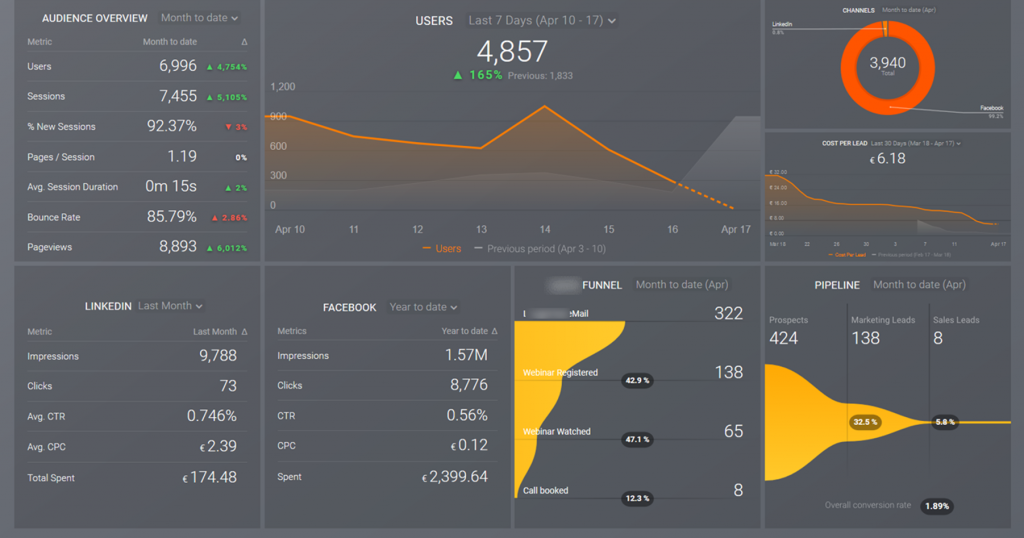
To take an example, if you are reading this blog, we already know quite a bit of information about you: where you came to our site from, whether you actually read the blog, what other content you looked at.
On top of that, the information that large market players such as Google or Facebook have already collected about you allows us to know demographic data about you, what your interests are, and other information.
But, unless you have signed up for a newsletter or one of our other offers, we will not have your personal contact data.
Then you decide that some of our offers are well worth sharing your data for. As soon as you do this, we can match your contacts with your behavior and we can also draw a conclusion regarding how serious your intentions are. If we notice that you have visited our site several times, read our blog posts and the “how to contact us” page, we can conclude you are rather seriously interested in our offers and so we will pay extra attention to any requests from you.

As well as your behavior, we constantly track our marketing and advertising funnel to make sure that we have a sufficient number of first-time website visitors to make for the necessary number of interested customers and qualified leads. We track the marketing pipeline in a similar fashion to the way companies track their sales pipeline – we make sure both pipeline and functions are tightly integrated and support each other.
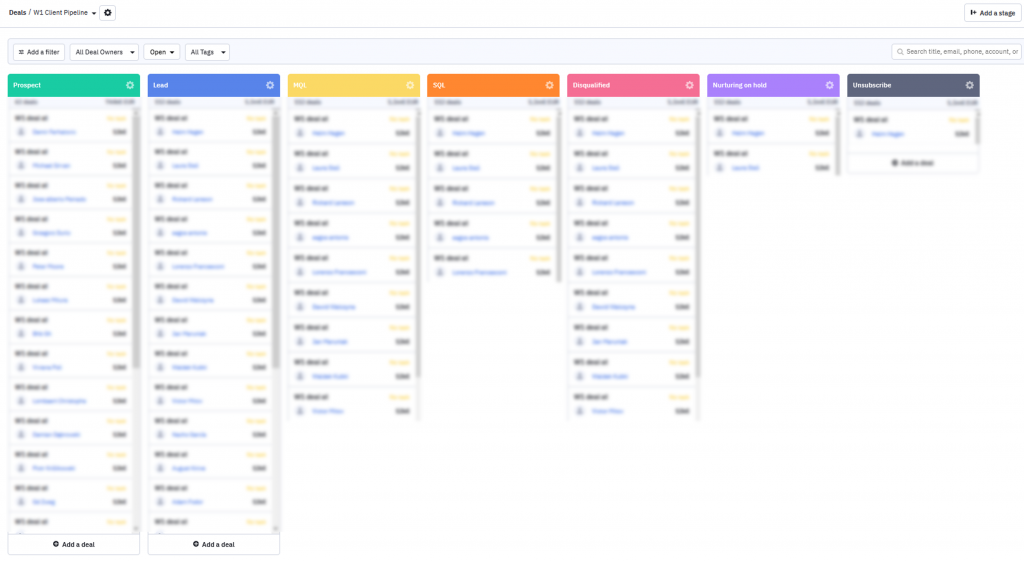
Digital Sales Engine means tight marketing and sales alignment
One of the most important aspects of Digital Sales Engine is ensuring tight alignment between marketing and sales.
We measure the success of our marketing by the number of marketing qualified leads generated and passed over to sales and ration of sales accepted leads.
Marketing analytics allows us to measure customer activity and draw conclusions about our customers’ readiness to talk with sales representatives. We are a small company and concerned about our productivity. Salespeople are expensive, great salespeople even more so.
For this reason, we want our salespeople to focus on potential customers that have demonstrated a high level of interest in our services, and so our salespeople get transferred only those leads whose activities show high readiness to purchase.
Prospective customers who haven’t yet demonstrated a high level of interest/readiness to purchase are continuously nurtured with automated and semi-customized content flows that gently guide them closer to making the decision to engage with us.
To give an example, we use customer-nurturing emails to educate customers about our offers; we also use online webinars, blog posts and YouTube videos. Once we see a customer is showing a sufficient degree of interest in our content, we conclude it is the right time to initiate a conversation.
By contrast, we spend almost no time with prospective customers at the early stages of the marketing pipeline. Instead, we focus on creating marketing content, content flows, events, and other activities that allow us to engage with a significant number of customers in a 1-to-many fashion.
With all the marketing automation options available, we just cannot afford the luxury of salespeople educating customers in a 1:1 fashion – unless the customer is an Extremely Important Very Large Company of course.
How is Digital Sales Engine implemented?
The critical test of any good idea is its implementation. So how is the engine implemented?
A good first step is to start with the strategy and do a competition analysis early.
This will provide a clear answer regarding what it takes to successfully compete in your industry and how much it will cost. If you are fortunate and your competitors are not too advanced in terms of marketing (which happens surprisingly often), even modest investment in marketing content and processes can significantly increase the number of leads generated. It can also happen that after competition analysis, you decide to focus more on certain geographic areas or certain market segments.
One key driver behind a decision to focus on certain geographic areas can be the cost of marketing. As you can see in the graph below, the cost per click (or cost for getting a single website visitor) varies significantly between countries. (I recommend reading my other blog specifically dedicated to international expansion)
The next step is developing a digital marketing strategy. This includes creating buyers’ personas, designing customer journeys, developing a marketing content calendar, marketing and sales pipeline projections, producing an action plan, along with cost estimates and statements of work, responsibilities, deadlines, etc.
Once there is an agreement in place, it is time to start producing the first set of marketing content, designing landing pages, planning marketing automation, setting up an analytics framework, setting up advertising campaigns, etc.
Once the marketing campaigns are up and running, a continuous process of learning, analyzing and improving begins. Remember – the customer journey of least resistance wins.
In most cases, customers benefit from trying out a mix of advertising networks, messages, and formats to find out what truly works. We recommend starting with Facebook, Google Ads and Linked in.
Only data tells us what works and what doesn’t.
While the exact length depends on the sales cycles of specific products, I would say that on average it takes several weeks at least until the sales engine is producing marketing qualified leads who are ready to talk with sales. These discussions provide additional learning points on the way to continue improving the lead generation engine.
IBD Consulting can provide Digital Sales Engine as a service, including provisioning of the respective CRM system and internal sales process implementation for proper marketing and sales funnel management. In this scenario, the customer would only need a single salesperson to work with qualified customers.

We are also open to training customer’s personnel and transferring the engine processes and knowledge to the customer entirely or prepare a marketing content plan and develop content respectively.
Knowing the ever-changing technological landscape and the scope of knowledge required, we would still recommend all customers using third-party expert knowledge to make sure your marketing and sales engine is running optimally unless you have a whole marketing department with highly skilled professionals.
A good first step to see how IBD Consulting can help your business is to get in touch. Let’s talk and let’s see where it takes us.

